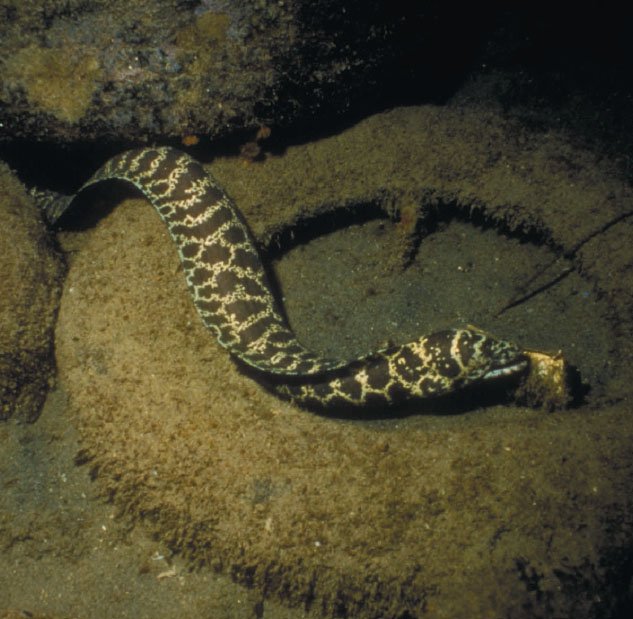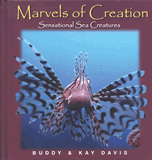There are 50 species of sea snakes. They live in the shallow waters of the tropic areas from the Persian Gulf to Japan to Australia.
Some of the longest sea snakes have a small head and slender front half of the body but much fatter rear quarters. Sea snakes have differences in appearance. Some have a spine on the snout, while others have thorn-like scales above the eye. Other sea snakes have leaf-like scales and others have small, warty scales.
The color of the sea snake varies from black, yellow, brown, and gray. All of the sea snakes are poisonous. The venom glands are located below the eyes. They have cobra-like fangs in front of the mouth that are hollow, small, and permanently erect. Sea snakes have a great variation in the potency of their venom. There are few reports of fatalities from sea snakes. The sea snake’s bite is painless and very slow-acting on humans.
Sea snakes hunt at night, striking their prey swiftly, killing it within a few minutes. They feed on eels and other small fish.
There have been reports of masses of sea snakes floating on the surface of the water. One report said the mass was 10 feet (3 m) wide and 60 miles (97 km) long. It is thought that this was during their breeding season.
Some sea snakes come on land to lay their eggs. Others lay their eggs in caves open to the sea. Still others give live birth at sea.
Sea snakes are hunted for their skin, which makes good leather. They are also harvested for their meat.
Sea Snake
Squamata • Hydrophidae • Pelamis platurus
Length: 5 feet (1.5 m) up to 10 feet (3 m)
Special Design Feature: The body of the sea
snake is flattened from side to side with a
paddle-shaped tail and its nostrils have a
valve which keeps out water.
Did You Know? Sea snakes breathe air and
will drown if held under the water.

Marvels of Creation: Sensational Sea Creatures
Brings the world of the sea alive in a unique and colorful way with photographs, a page of facts and commentaries.
Browse Kids BookRecommended Resources
- © 2025 Answers in Genesis
- Privacy Policy
- Contact
- About



